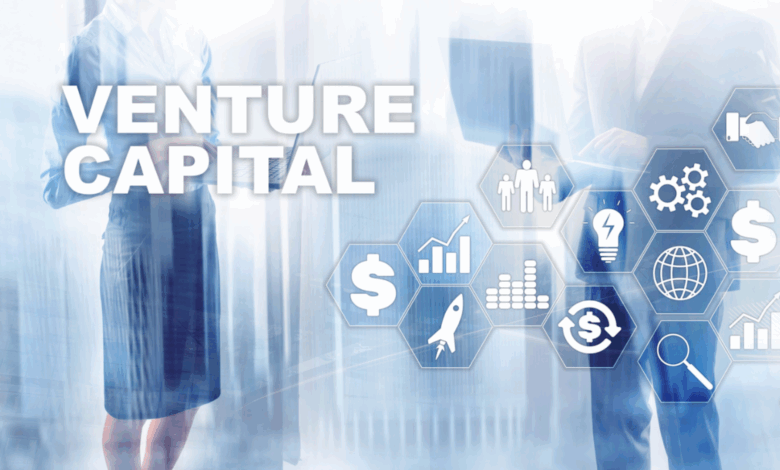
Over the past five decades, we have witnessed five seismic waves of technological innovation that redefined the global economy and rewired human behavior: the age of mainframes, the rise of personal computing, the birth of the internet, the mobile revolution, and the proliferation of cloud computing. Each arrived roughly a decade apart, building upon the foundation of its predecessor and expanding the boundaries of possibility.
Today, we are standing at the precipice of the sixth and perhaps the most transformative paradigm shift: Artificial Intelligence (“AI”). Unlike prior waves, AI is accelerating at an unprecedented speed, scaling globally, and seamlessly embedding itself into both digital and physical realms. For investors, this is not just another chapter in the technology playbook. It is a once-in-a-generation inflection point, one with the potential to create enduring generational wealth for those who position early and thoughtfully.
The AI Surge: Speed, Scale, and Unprecedented Value Creation
In venture capital, speed and scale matter, and AI is breaking every historical benchmark. Nvidia created more than $2 trillion in market capitalization in just 18 months. OpenAI reached a $300 billion valuation in just 2.5 years after the launch of ChatGPT. To top it all, leading private AI companies are now achieving $1 billion valuations in as little as 12 to 24 months, a trajectory that previously required five to ten years of execution.
This acceleration isn’t limited to capital markets; it’s echoed in adoption curves. Personal computers took 20 years to reach 50% U.S. household penetration, the internet 12 years, and mobile phones six years. AI is on track to achieve that milestone in under three years. More impressively, ChatGPT is projected to surpass one billion users within 31 months of launch, outpacing all major social media platforms – TikTok, Facebook, and Instagram, each of which took over 90 months to reach that level.
The implications extend far beyond headline adoption; it is translating into profound shifts in digital behavior. In 2024, ChatGPT processed 365 billion annual searches, a level of activity that took Google 11 years to reach. Such scale, achieved in under two years, underscores the magnitude of this platform shift. The AI wave is being propelled by both established incumbents, such as Microsoft and Nvidia, and emerging disruptors, including OpenAI and Anthropic, blurring the traditional boundaries between public and private market leadership.
The Real Momentum is in the Private Market:
AI is entering its breakout phase, characterized by rapid capital formation, soaring valuations, and an intensifying race to establish enduring competitive advantage. While public market giants are investing aggressively, the most explosive growth is happening in the private markets.
AI revolution is fueling a broader VC recovery and laying the groundwork for the next generation of private-market leaders.
- Private AI Outpaces Public AI: The top ten private AI companies expanded their combined market cap by more than 200% YoY compared to just 10% growth for their public counterparts
- Mega-Rounds as the New Normal: $10B+ raises are becoming standard for companies building powerful foundational models, like OpenAI and Anthropic.
- Exceptional Growth Trajectories: Leading AI software companies are scaling revenue 10 times YoY, far outpacing historical benchmarks for even the most successful technology companies.
The Powerful Forces Driving Generative AI Adoption:
Generative AI (GenAI) is not launching into a vacuum but into a world built with robust computing, global networks, abundant data, global distribution, and deep talent. During the cloud era, an estimated 360 million people were online; today, 5.6 billion people (nearly 70% of the world) are connected. That foundation compresses time-to-adoption and magnifies impact.
What’s driving the acceleration:
- No Platform Shift Required: Unlike past technology transitions — from on-premises to cloud, or desktop to mobile — this paradigm shift requires no costly reinvention of hardware or operating system. Generative AI can be embedded seamlessly into existing workflows through simple API integrations.
- Universal Interface, Frictionless Creation: for the first time in history, the “programming language” is human language itself. No technical skill or device adaptation is required; anyone can engage by speaking or typing. Even software creation is becoming democratized, empowering both developers and non-technical users to build at scale.
- Viral Consumer Dynamics: Instant shareable AI outputs (text, images, code) are created, fueling powerful viral loops and amplifying network effects at internet speed
- Enterprise Pull, Not Push: Clear ROI and competitive pressure have created a pool of motivated enterprise buyers with budgets and mandates.
- Collapsing costs: Large language model usage costs dropped from $30 to under $5 per million tokens in under two years, a decline steeper than Moore’s Law or bandwidth cost curves. As costs collapse, use cases multiply, unlocking orders of magnitude more demand.
- Abundance of Capital: The race is on with multiple-dollar incumbents (Microsoft, Google, Amazon, Meta, Nvidia – chasing the same opportunity. In the private market, AI companies are dominating venture capital investment, capturing 50% of funding and already surpassing 2024’s record full-year total.
Lessons from Prior Waves
As with every major platform shift, the current phase will set the stage for where and to whom the most enduring value will accrue. We see AI following a similar pattern, and a few lessons have been made clear by prior waves of technological disruption:
1. Wave 1 – Infrastructure and Enablers, “Powering AI”: The first wave has been dominated by enablers – GPU makers (Nvidia), hyperscale cloud providers (AWS, Azure, GCP), and foundational model builders (OpenAI, Anthropic). These companies have laid the computational and architectural rails on which the AI economy is being built.
However, history shows that those who put billions into building the “rails” (infrastructure and foundational layers) are not always the ones who capture the largest share of long-term value. In the internet era, it was not telecom and cable providers, such as AT&T, Verizon, and Comcast, who laid the wires that became dominant; it was Google, Meta, and Amazon, which built on top of these foundational rails and captured most of the economic upside through software-driven business models.
Lesson 1: Companies that build infrastructure are not necessarily those who monetize it. They will soon give way to bigger opportunities in the application layers where the most enduring value will be created and the highest investor returns will be generated.
2. Wave 2 – Application Differentiation, “Making AI Defensible”: The second wave is unfolding at the application level, where GenAI is embedded directly into productivity tools, creative apps, and enterprise platforms to enhance speed, boost efficiency, and enable personalization at scale. Speed and momentum can drive early breakout success, but the company must build defensibility through moats – proprietary data, network effects, or vertical integration – to fend off fast followers and deep-pocketed incumbents.
Lesson 2: The first to introduce a new application may not always be the winner. First-mover advantage matters, but sustainable moats determine the ultimate winners.
3. Wave 3 – Category Leader, “Turning AI into a Dominant Market Force”: The third wave is on the horizon, driven by visionary disruptors building innovations that are hard to imagine today. When smartphones first emerged, few could have predicted how profoundly they would reshape our daily lives by creating entirely new categories such as ride-sharing, social media, and on-demand food delivery.
Lesson 3: The biggest breakthroughs rarely come from general-purpose tools. They come from full-stack companies that deliver vertically integrated, end-to-end solutions, reshaping not only how industries operate but also redefining the behavior, expectations, and economics of their end markets.
AI in Motion
In the digital economy, generative AI has already begun reshaping productivity. Enterprises are deploying it across various departments, including sales, marketing, content creation, software development, healthcare, and even law. To date, its impact has been mostly seen in software-driven intelligence, including text generation, code completion, data analysis, chatbots, and virtual assistants. These applications, while powerful, represent only the opening act.
AI is now crossing into the physical world, powering machines and robots to operate in dynamic real-world environments. Industries such as manufacturing, logistics, and transportation are transitioning from basic automation in repetitive, rule-based tasks to cognitive automation, utilizing AI-driven robotics to streamline workflows, boost efficiency, and improve safety at scale.
The most widely discussed frontier is the emergence of AI agents that not only assist with work but also autonomously perform it. Instead of simply responding like traditional chatbots, which are designed to follow scripts with limited functionality, AI agents execute tasks end-to-end through natural language commands. AI agents operate with intent, autonomy, memory, and guardrails. They interpret goals, coordinate across the system, and deliver not just answers but outcomes. However, at this stage, humans remain in the loop, providing oversight and final approval.
For consumers, this means personalized assistants that anticipate shopping, search, and discovery needs. For enterprises, it represents the convergence of the $230 billion B2B SaaS market with the $5 trillion global knowledge work economy, creating a massive market.
Why Investors Must Position Now
AI is not merely another innovation cycle. It is a structural transformation, a super-cycle. Building on decades of exponential progress in computing, networks, and data, AI is breaking every benchmark in speed of adoption, capital formation, and value creation. To say the world is changing at unprecedented rates is an understatement.
For financial advisors and investors, the implications are profound. This is not about incremental growth or chasing the latest trend. It is about positioning now for a structural platform shift that builds the future and unlocks generational wealth. The call is clear: participation in the private innovation market is no longer optional. It is essential for those who want to remain relevant, deliver differentiated value, and capture the upside of the most transformative investment cycle of our lifetime.




